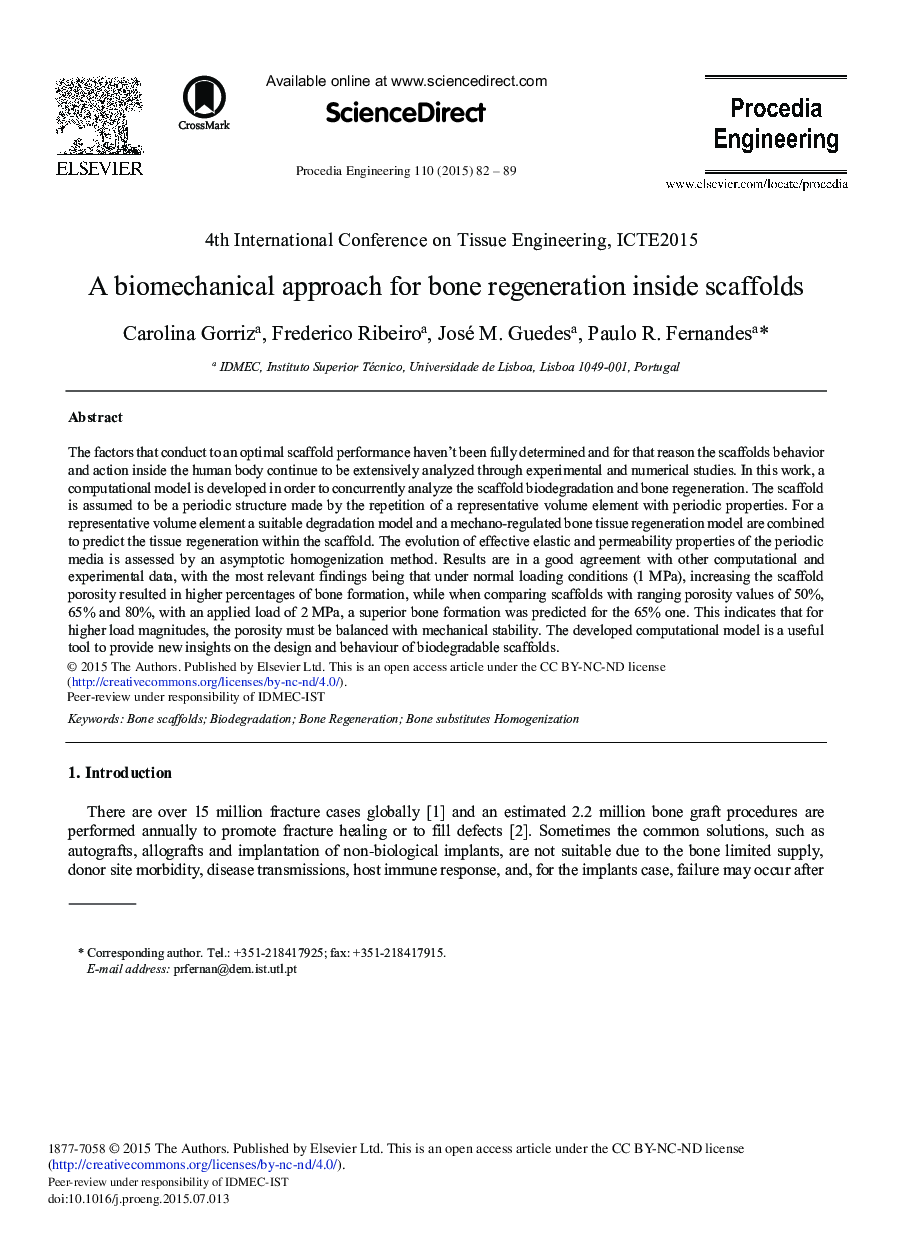| Article ID | Journal | Published Year | Pages | File Type |
|---|---|---|---|---|
| 856265 | Procedia Engineering | 2015 | 8 Pages |
The factors that conduct to an optimal scaffold performance haven’t been fully determined and for that reason the scaffolds behavior and action inside the human body continue to be extensively analyzed through experimental and numerical studies. In this work, a computational model is developed in order to concurrently analyze the scaffold biodegradation and bone regeneration. The scaffold is assumed to be a periodic structure made by the repetition of a representative volume element with periodic properties. For a representative volume element a suitable degradation model and a mechano-regulated bone tissue regeneration model are combined to predict the tissue regeneration within the scaffold. The evolution of effective elastic and permeability properties of the periodic media is assessed by an asymptotic homogenization method. Results are in a good agreement with other computational and experimental data, with the most relevant findings being that under normal loading conditions (1 MPa), increasing the scaffold porosity resulted in higher percentages of bone formation, while when comparing scaffolds with ranging porosity values of 50%, 65% and 80%, with an applied load of 2 MPa, a superior bone formation was predicted for the 65% one. This indicates that for higher load magnitudes, the porosity must be balanced with mechanical stability. The developed computational model is a useful tool to provide new insights on the design and behaviour of biodegradable scaffolds.
